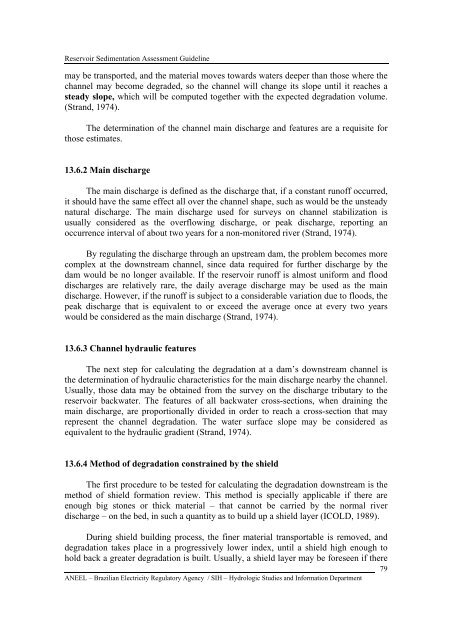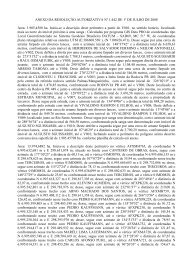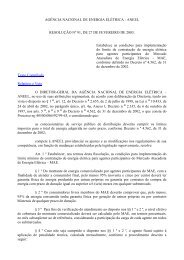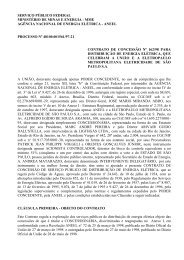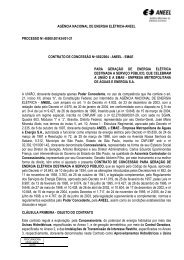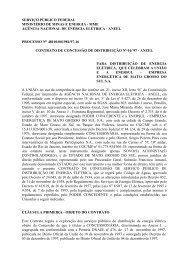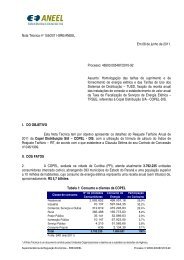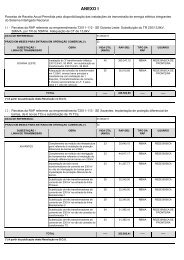RESERVOIR SEDIMENTATION ASSESSMENT GUIDELINE - Aneel
RESERVOIR SEDIMENTATION ASSESSMENT GUIDELINE - Aneel
RESERVOIR SEDIMENTATION ASSESSMENT GUIDELINE - Aneel
Create successful ePaper yourself
Turn your PDF publications into a flip-book with our unique Google optimized e-Paper software.
Reservoir Sedimentation Assessment Guidelinemay be transported, and the material moves towards waters deeper than those where thechannel may become degraded, so the channel will change its slope until it reaches asteady slope, which will be computed together with the expected degradation volume.(Strand, 1974).The determination of the channel main discharge and features are a requisite forthose estimates.13.6.2 Main dischargeThe main discharge is defined as the discharge that, if a constant runoff occurred,it should have the same effect all over the channel shape, such as would be the unsteadynatural discharge. The main discharge used for surveys on channel stabilization isusually considered as the overflowing discharge, or peak discharge, reporting anoccurrence interval of about two years for a non-monitored river (Strand, 1974).By regulating the discharge through an upstream dam, the problem becomes morecomplex at the downstream channel, since data required for further discharge by thedam would be no longer available. If the reservoir runoff is almost uniform and flooddischarges are relatively rare, the daily average discharge may be used as the maindischarge. However, if the runoff is subject to a considerable variation due to floods, thepeak discharge that is equivalent to or exceed the average once at every two yearswould be considered as the main discharge (Strand, 1974).13.6.3 Channel hydraulic featuresThe next step for calculating the degradation at a dam’s downstream channel isthe determination of hydraulic characteristics for the main discharge nearby the channel.Usually, those data may be obtained from the survey on the discharge tributary to thereservoir backwater. The features of all backwater cross-sections, when draining themain discharge, are proportionally divided in order to reach a cross-section that mayrepresent the channel degradation. The water surface slope may be considered asequivalent to the hydraulic gradient (Strand, 1974).13.6.4 Method of degradation constrained by the shieldThe first procedure to be tested for calculating the degradation downstream is themethod of shield formation review. This method is specially applicable if there areenough big stones or thick material – that cannot be carried by the normal riverdischarge – on the bed, in such a quantity as to build up a shield layer (ICOLD, 1989).During shield building process, the finer material transportable is removed, anddegradation takes place in a progressively lower index, until a shield high enough tohold back a greater degradation is built. Usually, a shield layer may be foreseen if there79ANEEL – Brazilian Electricity Regulatory Agency / SIH – Hydrologic Studies and Information Department


